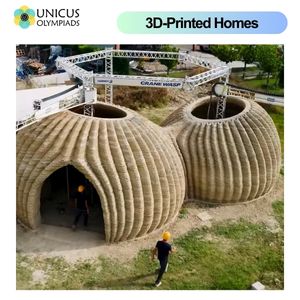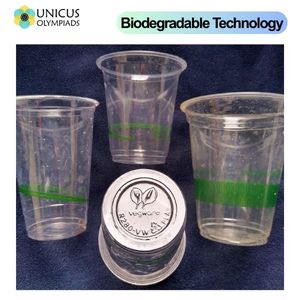

The need for sustainable solutions has led to groundbreaking innovations in technology, architecture, and manufacturing. These "eco-firsts" represent the cutting edge of environmentally friendly innovations designed to reduce waste, conserve resources, and lower carbon footprints. Eco-firsts, like 3D-printed homes and biodegradable technology, are setting new standards for sustainability, offering promising alternatives to traditional methods that often contribute to environmental degradation. In this article, we will explore some of the most innovative eco-firsts, the technologies behind them, and their potential to shape the future of our planet.
3D printing, also known as additive manufacturing, is transforming the way homes are designed and constructed. Traditional construction methods often rely on heavy machinery, large amounts of energy, and significant waste. In contrast, 3D-printed homes use digital designs and 3D printers to create structures layer by layer, offering a more sustainable and cost-effective approach to building. This innovative method has the potential to revolutionize the housing industry by providing affordable, energy-efficient homes that can be built faster and with fewer materials.

3D-printed homes are structures created by using 3D printing technology, where a large-scale printer deposits materials such as concrete, plastic, or other sustainable building materials layer by layer. The printer follows a digital design, which allows for precise control over the materials used and the structure’s design. This method reduces waste, speeds up construction times, and offers flexibility in design, making it ideal for creating low-cost, eco-friendly housing.
3D-printed homes offer several key environmental benefits, including:
Biodegradable technology refers to materials and products designed to break down naturally and safely in the environment, reducing the environmental impact of waste. The increasing use of plastic has created a global waste crisis, as plastic products take hundreds of years to decompose. Biodegradable alternatives offer an environmentally friendly solution, allowing for the safe breakdown of materials and reducing the accumulation of waste in landfills and oceans.
Biodegradable technology involves the development of materials that can be decomposed by natural biological processes, such as the activity of bacteria, fungi, or other microorganisms. These materials break down into harmless substances like water, carbon dioxide, and biomass, rather than accumulating in the environment like conventional plastics.
Examples of biodegradable materials include plant-based plastics (such as polylactic acid or PLA), biodegradable packaging, and bioplastics made from materials like starch or sugarcane. These materials are increasingly being used in consumer goods, packaging, and everyday items to reduce environmental harm.

Biodegradable technology offers several environmental benefits, including:
Eco-firsts, such as 3D-printed homes and biodegradable technology, are not only pushing the boundaries of innovation but also offering tangible solutions to some of the world’s most pressing environmental issues. From reducing waste and conserving resources to promoting renewable energy and improving urban living, these technologies represent a crucial step toward creating a more sustainable and eco-friendly future.
As the demand for sustainable housing grows, 3D-printed homes offer an innovative solution to the affordable housing crisis. By using environmentally friendly materials and minimizing construction waste, 3D-printed homes could play a key role in creating affordable and eco-friendly housing in cities worldwide. As 3D-printing technology continues to improve, the cost of building 3D-printed homes will likely decrease, making them more accessible to a wider range of people.
Biodegradable technology is poised to revolutionize the way products are manufactured and consumed. As more companies invest in bioplastics and biodegradable materials, we can expect a reduction in single-use plastics and a shift toward more sustainable packaging options. Furthermore, as biodegradable electronics and other high-tech products become more prevalent, they could significantly reduce electronic waste and its associated environmental impact.